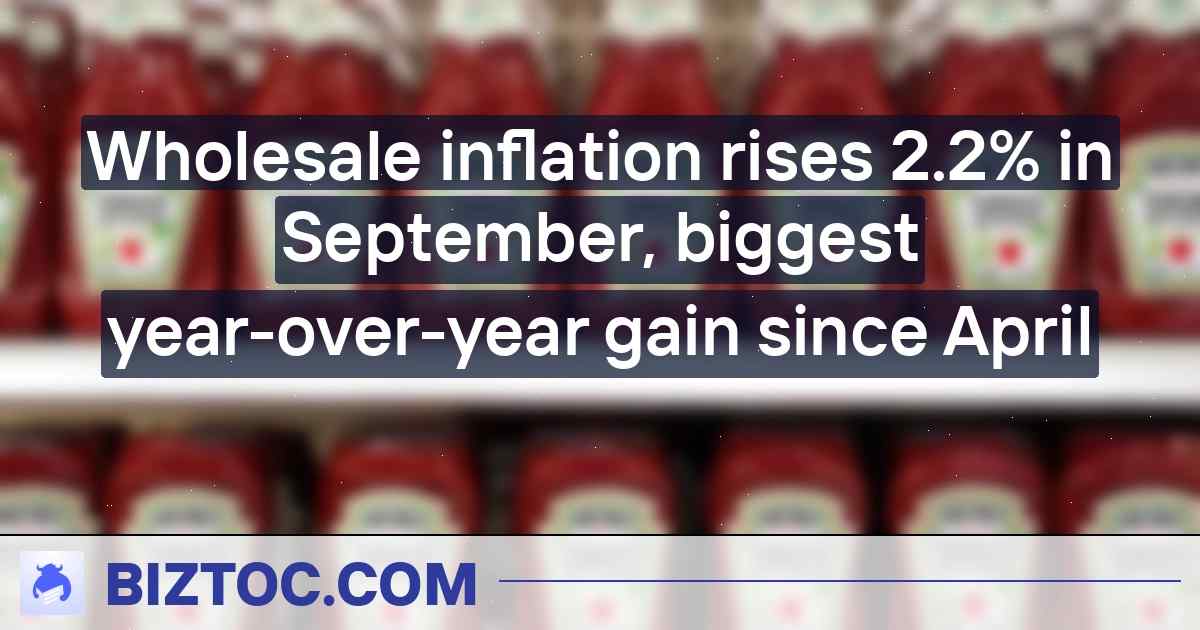Wholesale inflation in the United States rose 2.2% in September, marking the largest year-over-year increase since April, according to data released by the Labor Department on Wednesday. The surge in prices was driven primarily by increases in energy costs, particularly gasoline and diesel fuel, which jumped 9.8% and 10.6%, respectively.
The rise in wholesale inflation suggests that price pressures may be building in the economy, potentially threatening the Federal Reserve’s goal of keeping inflation near its 2% target rate. However, some economists believe that the increase is largely due to temporary factors such as supply chain disruptions and geopolitical tensions, rather than a sustained acceleration in inflation.
“The pickup in core inflation is still looking like a blip,” said Ian Shepherdson, chief economist at Pantheon Macroeconomics. “We don’t think this is the start of a sustained move higher.”
Despite the monthly increase, the annual rate of wholesale inflation remains relatively low compared to historical standards. Over the past 12 months, prices have risen just 1.7%, slightly above the Fed’s target rate but still within a range considered acceptable by policymakers.
Still, the report could impact monetary policy decisions, especially if price pressures continue to build in coming months. The Fed has cut interest rates three times this year to support economic growth, but officials have signaled they may pause their easing cycle unless inflation shows signs of accelerating.
In addition to energy prices, other categories contributing to the overall increase in wholesale inflation included food, which rose 1.4% in September, and services, which climbed 2.4%. Meanwhile, prices for goods excluding food and energy were unchanged last month, following a 0.3% decline in August.
The report also showed that core producer prices, which exclude food, energy, and trade services, increased 0.4% in September, matching forecasts and rising at a slower pace than the headline figure. Core producer prices have now risen 1.7% over the past 12 months, the same rate as the broader measure of inflation.
Looking ahead, economists expect wholesale inflation to remain subdued in the coming months, barring any unexpected shocks to global supply chains or geopolitical developments. With wage growth moderating and consumer demand steady, there appears little reason for businesses to pass through significant price hikes to consumers.
However, should inflation concerns persist, the Fed may need to reassess its accommodative stance and consider tightening monetary policy to prevent price pressures from getting out of hand. For now, though, investors appear content to focus on the positive aspects of the economy, including record-low jobless claims and robust corporate profits.
On Wall Street, stocks traded mixed following the release of the inflation data, with the Dow Jones Industrial Average slipping 0.1% while the S&P 500 Index edged 0.2% higher. Treasury yields remained stable, with the benchmark 10-year note yielding 1.77%.
In conclusion, while the latest reading on wholesale inflation suggests that price pressures may be ticking higher, it’s unlikely to alter the Fed’s current monetary policy stance. Barring any dramatic changes in the economic landscape, investors can expect the central bank to maintain its patient approach, monitoring incoming data before making any adjustments to interest rates. As always, market participants must stay vigilant for any shifts in the inflation narrative, prepared to adapt their strategies accordingly.

